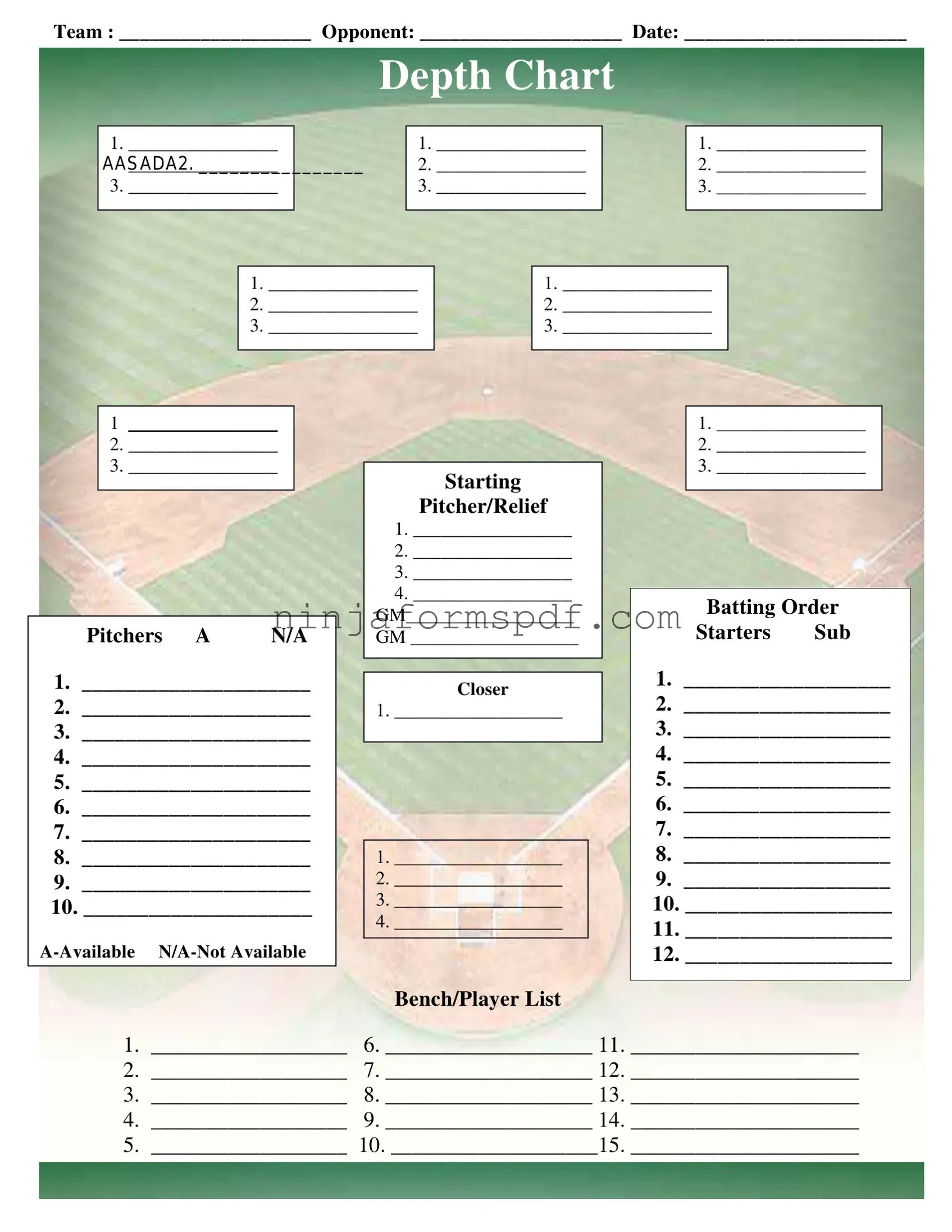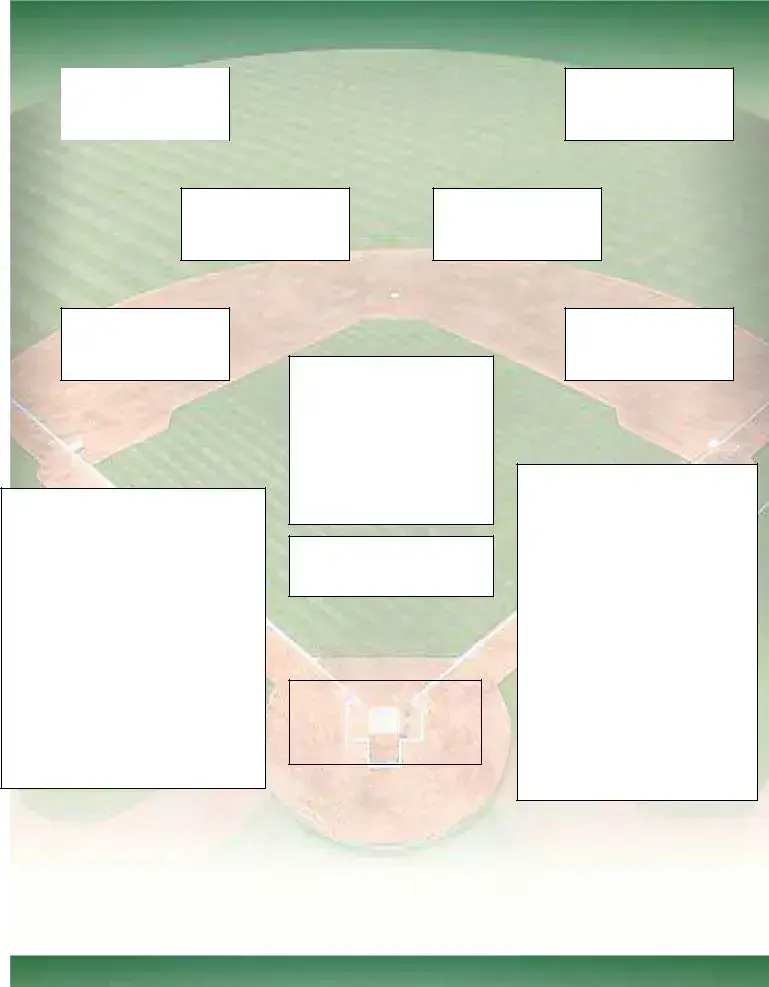The Baseball Field Lineup form shares a resemblance with a team roster in sports teams outside of baseball, such as football or basketball rosters. Both documents list players' names, positions, and sometimes their status (available or not available for the game). They serve as a structured overview of the team's composition for a specific match, assisting coaches and managers in strategy planning and providing clear information for officials and opponents. Similarly, these rosters are often structured to indicate starting players and substitutes, essential for strategizing game plays and player rotations.
Similarly, the Baseball Field Lineup form is akin to a project team assignment chart used in various business projects. These charts list team members, their roles, responsibilities, and sometimes their availability for the project. Like the lineup form, an assignment chart is a tool for leadership to allocate resources efficiently, ensuring that all roles are filled with the right personnel. Both documents feature a hierarchical or structured list, emphasizing the organization and strategic placement of individuals to optimize performance and results.
An inventory list, commonly used in retail or warehouse management, shares characteristics with the Baseball Field Lineup form. Inventory lists track items, quantities, and availability status—much like how the lineup form tracks pitchers and their availability. Both forms serve critical organizational roles, offering snapshot overviews that inform decision-making processes. While their contents differ (players versus products), the core function of managing availability and planning accordingly is strikingly similar.
Another document that bears similarity to the Baseball Field Lineup form is an event program schedule. Event schedules outline the timing, participants, and roles in various segments of an event, paralleling how the lineup form organizes players, positions, and batting order for a game. Both are instrumental in guiding participants through the sequence of activities or events, ensuring that all involved are aware of their roles and the overall flow.
Academic seating charts, used by educators to organize student seating arrangements, also share characteristics with the Baseball Field Lineup form. Both documents place individuals in specific positions based on strategic choices—whether for enhancing learning and interaction in the classroom or optimizing team performance on the field. Seating charts and lineup forms are vital for managing groups effectively, catering to overarching strategic goals.
The Baseball Field Lineup form has similarities with a concert or theater seating chart. These charts manage individuals' locations but in this context, it's for audience members rather than team members. They ensure that attendees have assigned spots, similar to how players have assigned roles and positions in the lineup. The intention behind both is to organize space and roles effectively, enhancing the experience for all participants, be it on the field or in an auditorium.
Last but not least, the Baseball Field Lineup form resembles a military unit's personnel roster. These rosters list soldiers, their ranks, and often their roles or specializations within a unit. Like a baseball lineup, a military roster is crucial for organizing team members, strategizing deployments, and ensuring readiness for operations. Both documents are designed with the intent of maximizing the group's effectiveness by strategically positioning its members according to their skills and roles.

